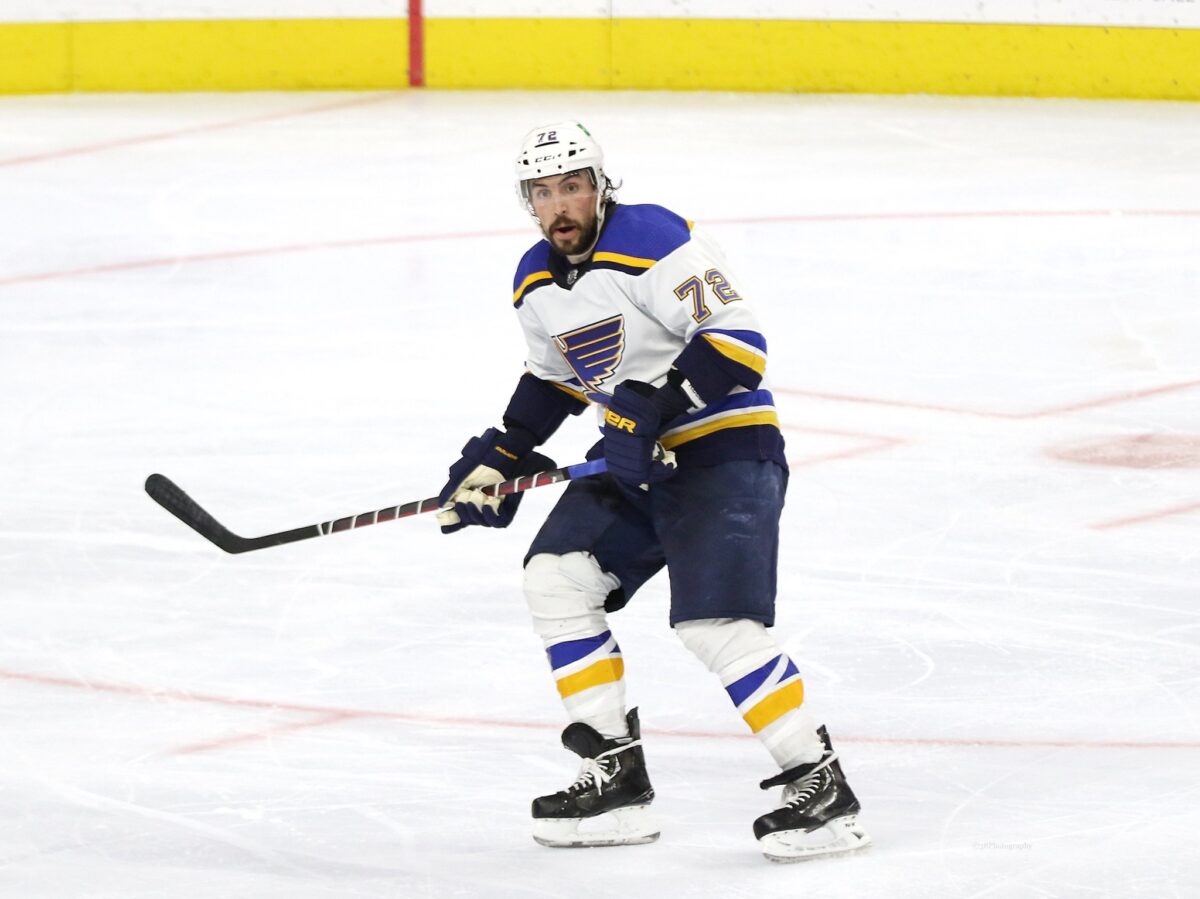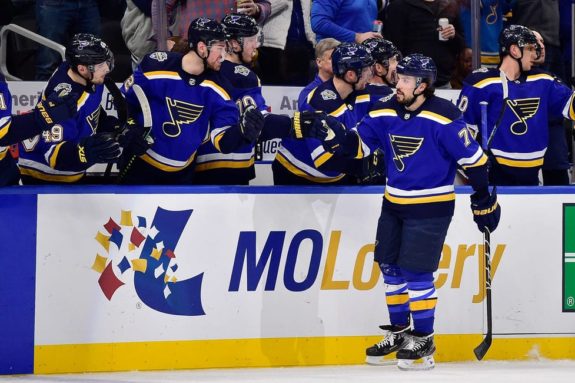In a season that has rapidly devolved from hopeful optimism to a grind of frustration, the St. Louis Blues find themselves searching for positives. Sitting at a lackluster 7-9-6 through the first quarter of the campaign, the team has looked disjointed, lacking the “juice” — to borrow a term circulating the organization — necessary to compete for a playoff spot in the Central Division.
Yet, amidst the murmurs of a roster shake-up and the palpable tension surrounding general manager Doug Armstrong’s next move, an unexpected narrative has emerged from the blue line. Justin Faulk, a 33-year-old veteran in his 15th NHL season, is playing some of the most productive offensive hockey of his career.
For the casual observer, Faulk’s resurgence is a nice sidebar. For the educated hockey fan and those tracking the asset management of the Blues, it represents a complex variable that could dictate how St. Louis navigates the upcoming trade deadline.
A Statistical Outlier in a Down Year
To understand the weight of Faulk’s recent performance, one has to look at the numbers in the context of the league-wide landscape. Defensemen scoring is a premium commodity in the modern NHL, usually reserved for the young, dynamic skaters who act as rovers.

However, following his 1,000th career game milestone, Faulk put the league on notice with a two-goal performance against the Philadelphia Flyers. While the game ultimately ended in a loss — a recurring theme for the Blues this season — Faulk provided the only offensive spark. His goals weren’t cheap rebounds; one was a heavy slapshot navigated through traffic, and the other a precise one-timer on the power play.
Related – Flyers Erase Another 2-Goal Blues Lead to Win in Overtime
Through 21 games, Faulk has posted six goals and six assists for 12 points. While the point total is respectable, the goal total is elite. His six tallies tie him for second among all NHL defensemen, placing him in the rarefied air of Cale Makar and Zach Werenski. He trails only the Calder Trophy favorite, Matthew Schaefer, by a single goal.
For a player whose offensive production has ebbed and flowed throughout his tenure in St. Louis, finding this scoring touch now is notable. It suggests that despite the mileage, the hands and the instincts remain sharp.
The Usage Paradox
The analytics community and the eye test generally agree on one thing regarding Faulk: he is currently being overleveraged.
Averaging 23:29 of ice time per game, Faulk is being deployed as a top-pairing anchor. In the current state of the Blues’ roster construction, this heavy lifting is out of necessity rather than optimization. At this stage in his career, Faulk’s efficiency charts suggest he is ideally suited as a luxury third-pairing defenseman on a true Stanley Cup contender. In that role, sheltered from the opposition’s top lines and given favorable zone starts, his offensive instincts could shine without exposing defensive liabilities.

This creates a dissonance between his current reality and his market value. The Blues need him to eat minutes to survive the regular season, but his trade value lies in his ability to be a depth piece for a team with championship aspirations.
Capitalizing on the “Shake-Up”
Armstrong has never been a GM to sit on his hands when the product on the ice fails to meet standards. Warnings of an impending shake-up have already been issued. The roster, as currently constructed, is failing the consistency test.
Related – The Blues Can Benefit From Going for Gavin McKenna in the 2026 NHL Draft
This brings us to the intersection of Faulk’s performance and the organization’s future. Faulk’s sudden rise in stock is arguably the best thing that could have happened to a front office looking to retool.
If Faulk were struggling, moving a contract with a $6.5 million average annual value (AAV) would be nearly impossible without attaching sweeteners. However, with Faulk producing at an elite rate relative to his position, the conversation shifts. He is no longer a distressed asset; he is a veteran leader with a letter on his jersey who is proving he can still put the puck in the net.
Contenders are always looking for defensive depth. They want insurance against injury, and they want experience. Faulk offers both, plus a sudden scoring punch that can turn a series.
Navigating the Market Constraints
However, moving Faulk is not as simple as calling up a contender and shaking hands. There are significant hurdles that educated fans must acknowledge.
First is the contract structure. Faulk has one year remaining after this season at that $6.5 million cap hit. In a flat-cap era where contenders are dollar-in, dollar-out, absorbing that hit is difficult. It likely means the Blues would have to retain salary or take back a bad contract to facilitate a move.

Second is the player’s control. Faulk possesses a 15-team no-trade list. While not a full no-movement clause, it significantly narrows the field of potential suitors. He controls half the board, meaning he can effectively block a move to undesirable locations or leverage the list to steer his way to a specific contender.
Finally, there is the state of the market itself. Currently, the NHL trade market is at a standstill. Most teams are utilizing long-term injured reserve (LTIR) to remain cap compliant, leaving little wiggle room for early-season blockbusters. The expectation is that the market will remain frozen until closer to the deadline when cap space accumulates and desperation sets in.
The Verdict
Faulk’s scoring success is a double-edged sword. On the ice, it is keeping the Blues competitive in games they might otherwise be blown out of. In the front office, it is creating a potential lifeline.
The Blues are unlikely to make the playoffs this season. The math is already working against them. Therefore, the priority must shift to asset management. Faulk’s surge has provided Armstrong with a window of opportunity that didn’t seem to exist a month ago.
If Faulk continues to find the back of the net, he transforms from a contract the Blues are “stuck with” into a legitimate trade chip. Once the market breaks open, expect a flurry of activity. Whether Faulk finishes this season in the Blue Note or in the colors of a contender will depend largely on whether Armstrong decides to sell high on a veteran whose value has unexpectedly peaked in a losing season.
For now, Faulk keeps shooting, and the rest of the league is starting to watch.
AI tools were used to support the creation or distribution of this content, however, it has been carefully edited and fact-checked by a member of The Hockey Writers editorial team. For more information on our use of AI, please visit our Editorial Standards page.
